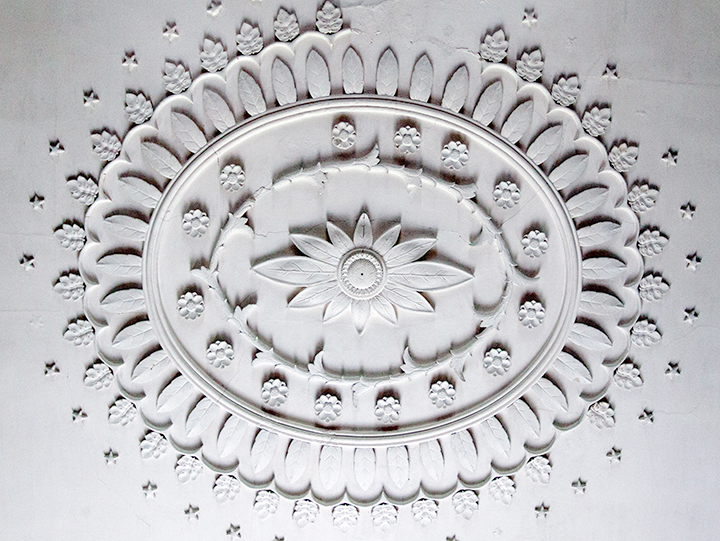First on Facebook – June 19, 2021
GWM: What has your work on Drayton Hall taught you?Richard “Moby” Marks, preservation contractor:Drayton Hall has shown me that the materials speak to their time of use.For example, good examples of the 18th-century ornamental plasterwork you now see in Drayton Hall’s drawing-room have not survived. Other early plasterwork looks more like clay and straw than lime and is certainly not gypsum plaster. St. James Goose Creek Church is the closest thing I can think of in this area that has the hand-modeled, sculpted plasterwork that plasterers were doing in England in the late 1600s and early 1700s. That tradition transports you back in time and is the closest thing to a time machine because you have to get in the mindset of the people that did the work, understand their technology and pattern books, and only then fix the problems.By looking at one part of the building, we learn about other parts.For example, by searching the attic for evidence of the original shingle roof, we found part of an internal roofing drainage system that was part of the original W-designed roof. We’ve made such discoveries on every project.GWM: How does Drayton Hall speak to you?RM: Due to its scale, architecture, detailing, and joinery, Drayton Hall is unique. Whether that’s a result of its having been one of the few survivors or of its having been, in its time, a rare example of sophisticated architecture with extraordinary woodwork, joinery, scale, and symmetry, remains a good question. Everything was done to an expert level that shows an architect or a master builder superior to most any we’ve seen in Charleston. This is a very English house that exudes English detailing, proportion, and scale.Excerpt from my new book “Drayton Hall: A Place and Its People,” due out this fall 2021.
Preview my new book “Drayton Hall Stories: A Place and Its People”
 George W. McDaniel, Ph.D., is President of McDaniel Consulting, LLC, a strategy firm that helps organizations use history to build bridges within itself and to its broader constituents. The company’s tag line, “Building Bridges through History,” is grounded in McDaniel’s personal beliefs and his experience in site management, preservation, education, board development, fundraising, and community outreach. Rather than using history to divide us, he strives to help organizations use history, especially local history, to enhance cross-cultural understanding and to support local museums, preservation, and education. Dr. McDaniel led volunteer efforts with Emanuel AME Church and historical organizations in Charleston to use historic preservation to enhance racial reconciliation and healing. McDaniel is also the Executive Director Emeritus of Drayton Hall, a historic site in Charleston, SC, owned by the National Trust for Historic Preservation. He retired from Drayton Hall in 2015 after 25 years of distinguished service.
George W. McDaniel, Ph.D., is President of McDaniel Consulting, LLC, a strategy firm that helps organizations use history to build bridges within itself and to its broader constituents. The company’s tag line, “Building Bridges through History,” is grounded in McDaniel’s personal beliefs and his experience in site management, preservation, education, board development, fundraising, and community outreach. Rather than using history to divide us, he strives to help organizations use history, especially local history, to enhance cross-cultural understanding and to support local museums, preservation, and education. Dr. McDaniel led volunteer efforts with Emanuel AME Church and historical organizations in Charleston to use historic preservation to enhance racial reconciliation and healing. McDaniel is also the Executive Director Emeritus of Drayton Hall, a historic site in Charleston, SC, owned by the National Trust for Historic Preservation. He retired from Drayton Hall in 2015 after 25 years of distinguished service.
A frequent writer, speaker, and facilitator about such issues, he can be reached at gmcdaniel4444@gmail.com or through his website at www.mcdanielconsulting.net.
All images courtesy of the author unless otherwise noted.

 McDaniel Consulting LLC is a strategy firm that helps organizations use history to build bridges within itself and its broader constituents.
McDaniel Consulting LLC is a strategy firm that helps organizations use history to build bridges within itself and its broader constituents.